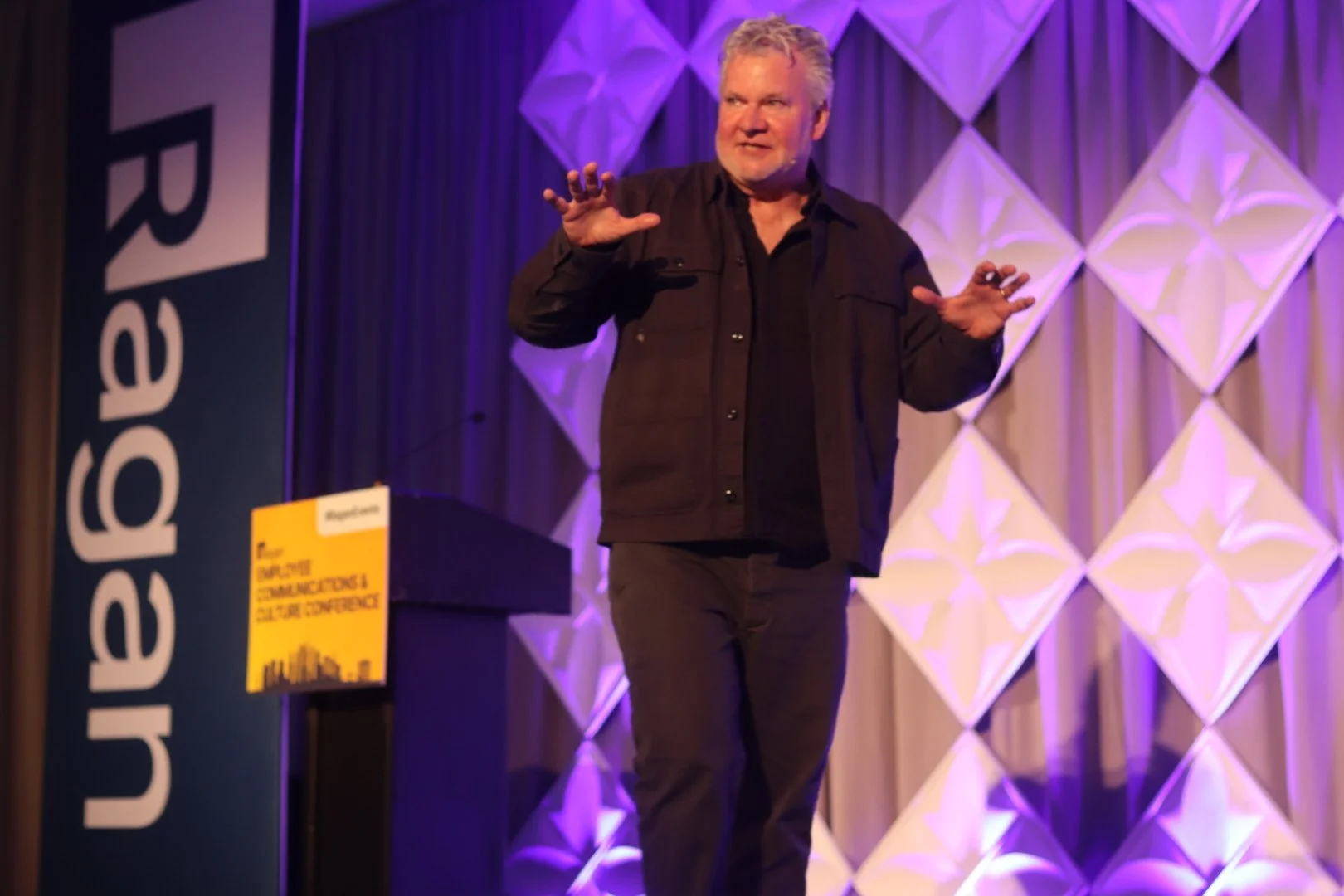Kelly Leonard of The Second City Shares How improvisation Helps in Communication
When you hear about improv, you may think about performances filled with raucous laughter in dimly lit theaters or the origins of many a star on Saturday Night Live. But the tips and tricks that work for some of the world’s best comedic minds also help you communicate better with colleagues.
Kelly Leonard, vice president of creative strategy, innovation and business development at The Second City, kicked off Ragan’s Employee Communications and Culture Conference with an interactive keynote that demonstrated how many of the same skills that improv performers use can help comms pros do their jobs more flexibly and effectively.
“Improv is a lot like yoga for the mind,” Leonard said.
Bringing improv into negotiation
Leonard began by prompting the audience to engage in an improvisational exercise. To start, asked one person to try to convince two others at their table of an idea, with the respondents then replying with a “yes, but” response the first time.
This response method showed that by failing to build on the original idea and changing the topic, the conversation didn’t really go anywhere. But when the same concept was done with a “yes, and” response, more ideas freely flowed, allowing for increased creativity and collaboration.
From CommPRO:
Kelly Leonard's keynote at Ragan's Employee Communications and Culture Conference showcased how improvisation techniques, often used in comedy, can significantly enhance communication skills in professional settings. Leonard emphasized that improvisation is like "yoga for the mind," fostering flexibility and effectiveness in communication. One key exercise demonstrated the power of "yes, and" over "yes, but" responses, promoting the flow of ideas and collaborative creativity essential in any dynamic work environment.
Leonard also highlighted the importance of maintaining a positive, progressive dialogue during brainstorming sessions and how acknowledging and building upon ideas fosters an inclusive and productive atmosphere. Moreover, his personal anecdotes about navigating disagreements through finding common ground illustrate practical strategies for communicators to engage with diverse perspectives effectively.
Communicators should read this article to understand how adopting improvisational techniques can lead to more effective, engaging, and empathetic interactions in professional settings. The insights provided can help overcome communication barriers, encourage a culture of innovation, and enhance team dynamics, making it a must-read for those looking to elevate their communication strategies.


